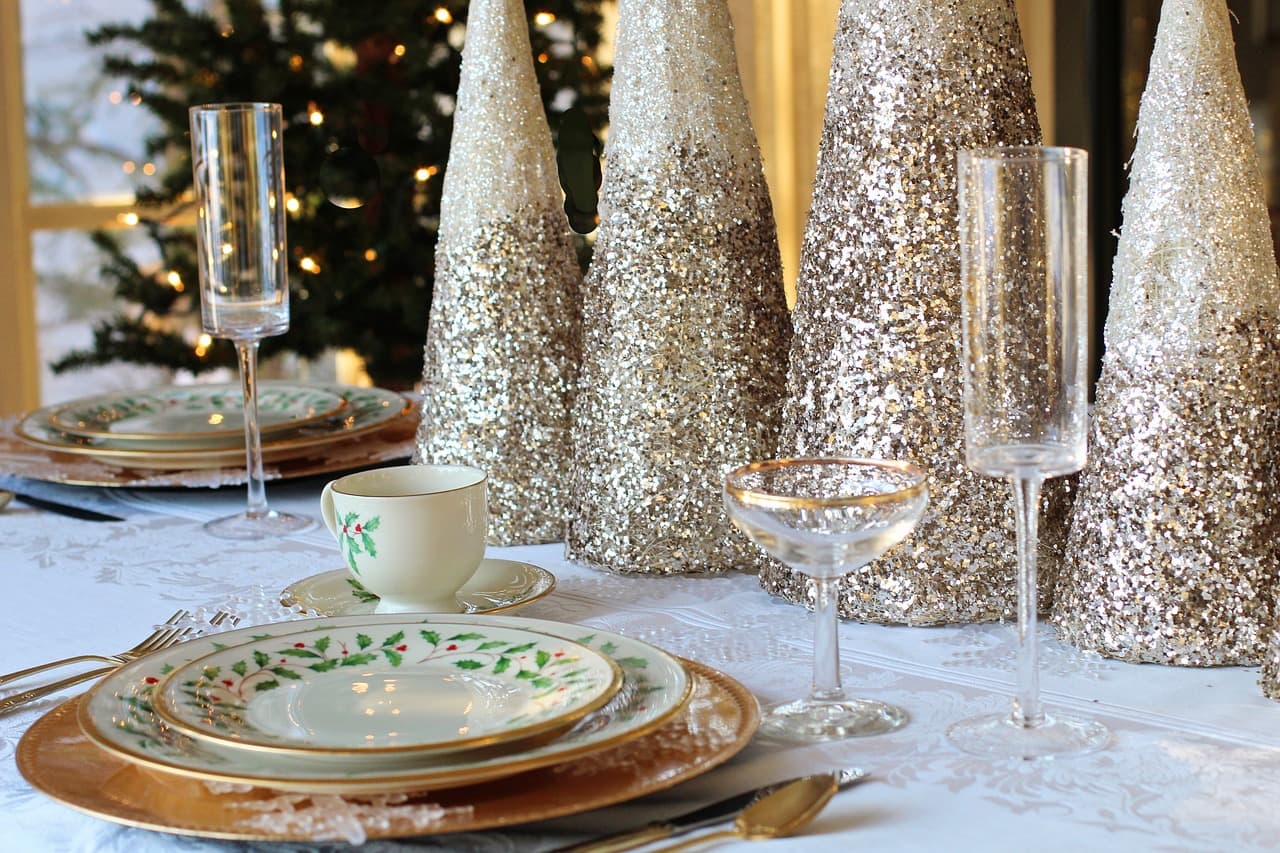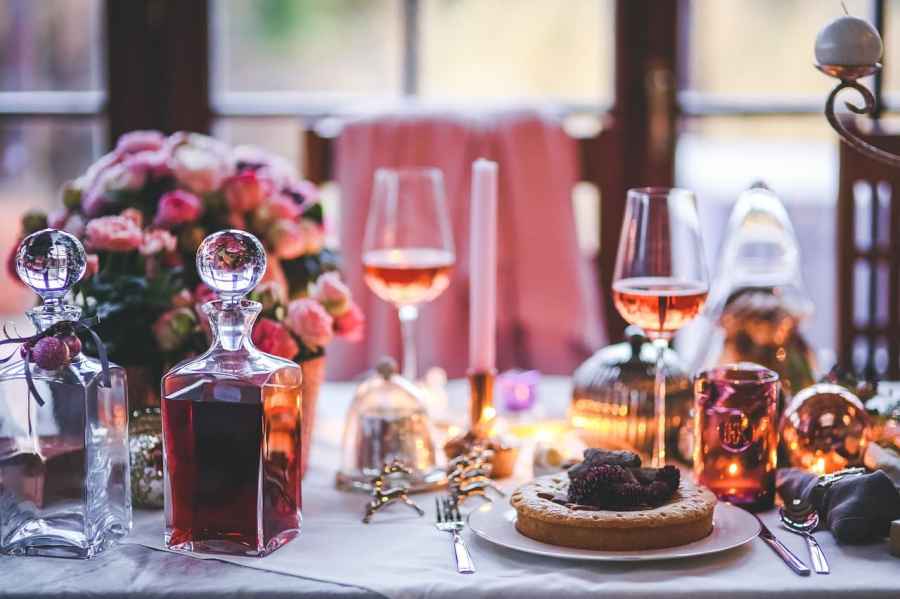As the nights draw in, and the weather outside becomes a little less forgiving. You can be forgiven for thinking that your photo opportunities are a little thin on the ground. But as festive activities start to take shape in December you’ll probably find stacks of potential shots just waiting to happen in your own home, as well as out and about. In this feature, we’re going to share some tips for making the most of the abundance of festive food. Giving you the opportunity to try your hand at Christmas food photography. So, pour yourself a mug of mulled wine and discover the best ways to show off your festive fancies below…
Christmas Food photography tips
Visit a Christmas market
A Christmas market is a fantastic place to go for Christmas themed photography – especially for food. From vendors selling mulled wine, hot chocolate and hot food, to stalls selling Christmas cookies and more. There are plenty all over the UK, Europe and around the world to visit. Most of which will be running from the end of November through to mid-December, and even January. Try capturing the food on the stands, being prepared or in the hands of hungry customers.
Try a Christmas food flat lay
Using what you have at home, try making your own Christmas flat lay! Collect some props – such as foliage, confetti, lights, baubles. As well as food, like mince pies and candy canes and begin to start experimenting with arrangements and shapes. Tracy Calder shared ideas for ways to photograph a bouquet of flowers, which can be adapted to this!
Daylight is best – but not always
You may have heard that for food photography, natural light is best. That is definitely true, but at Christmas, with an abundance of Christmas fairy lights and sparkle around the place, you can often find that night time shots are just that little more atmospheric.
You could try taking the same shot (if you can resist eating the props that long!) both in the day and later at night to see which you prefer. For the daylight shots, positioning the food next to a window increases your chance of the best possible light shining on to your subject.
For the night time shot, try and position your food in front of some fairy lights – perhaps that are hanging on the tree – use a wide aperture to blur the background and create a beautiful bokeh effect.

Reflect the light
If you’re going to be shooting in the daylight, investing in a simple reflector can be the difference between standard food photos and those that pop. Look for a reflector which offers multiple covers, so you have silver, gold, white and black. The gold reflector will offer a warmer type of light, which is often ideal for Christmas shots. The silver side meanwhile, throws a colder type of light over your subject, which if you’re going for light colours can create a beautiful high key effect.
The white side can throw some neutral light onto your subject, while the black side is useful for absorbing light – that can be useful if there’s odd reflections on food, especially if it’s something glossy, like chocolate. Also keep a look out for a reflector which includes a diffuser to soften any harsh light which may be creating strong shadows.
Get your white balance right
The wrong white balance can make or break a food photograph, particularly when faced with an abundance of different light sources at this time of year. If you’re shooting in daylight, most cameras will cope well to produce accurate colours, but if you’re shooting in artificial light, some cameras may struggle, tending towards yellowish tones. For best colours, use a custom white balance setting by taking a reading.
Consider your colour scheme
To give your Christmas shots that extra feeling of festive fun, thinking about the background can be a good idea. Green and red backgrounds tend to work well, of course, but also other festive colours such as gold and silver can be effective. It’s not just backgrounds to consider either, pay careful attention to your props – such as plates, cutlery, tableclothes and so on. Keep an eye out for props that will work well for your scheme – charity and antiques shops are great places to find unusual pieces.

Use a tripod
Food photography relies on a lot of light entering the frame, and although you’ll be using wide apertures on many occasions, you’ll also want to keep the ISO (sensitivity) down to a minimum for maximum detail, and perhaps even using slow (ish) shutter speeds. Using a tripod, and a remote release if you have one, ensures that your subject is sharp across the frame, and means you can make precise adjustments to the food setup without having to put down and recompose your frame for every shot.
Get up close with a macro lens
Although you can use pretty much any kind of camera or lens to take great food shots, a macro lens will help with detail and usually have a wide maximum aperture for those beautiful shallow depth of field effects. If you’re working with a camera with a fixed lens, be sure to switch on macro mode to help with fine detail.

Compositional decisions
Don’t just snap and go when it comes to Christmas food photography – think carefully about where you place yourself and the camera. Generally speaking, images taken from the same level as the food tend to look better than from eye level. On the other hand, a shot from directly over head can work well for certain subjects and shapes, too. You can make a fun montage by taking several shots of the same subject and combining them together.
Set the scene
To differentiate between a normal food shot and a Christmas food shot, have a think about table decoration and other background props. Framing a Christmas tree carefully in the shot, or having table props such as Christmas crackers and party hats, can all add to the Christmas feeling.

Get friendly with Live View
If you’re using a DSLR (or CSC with a viewfinder) to take your food shots, it makes sense to shoot using Live View, rather than through the viewfinder. It’s easier if you’re working with a tripod than having to bend and peer through the finder, and the larger size of the screen helps to check critical focus, especially if you magnify the scene.
Shoot in raw format
Shooting in raw format is generally always a good idea, but with food photography, perhaps especially so. Shooting in raw gives you the flexibility to change strange colour casts from a slightly off white balance, favour detail over noise, and tweak the exposure if necessary.
Be mindful of your background
At this time of year there can be a lot going on – with people, decorations, lights and trees causing potential distractions. Consider your background and the surface you are photographing food on. If you are setting up your food shot, effective styling will make the difference between a good and a bad shot. If you’re out and about, move around and try different angles to ensure surrounding events do not distract from your main subject.
Check out our food photography guide for more tips, kit guidance and styling advice.
Why not enter your photos to Pink Lady® Food Photographer of the Year, which closes 5th February 2023 midnight GMT.








